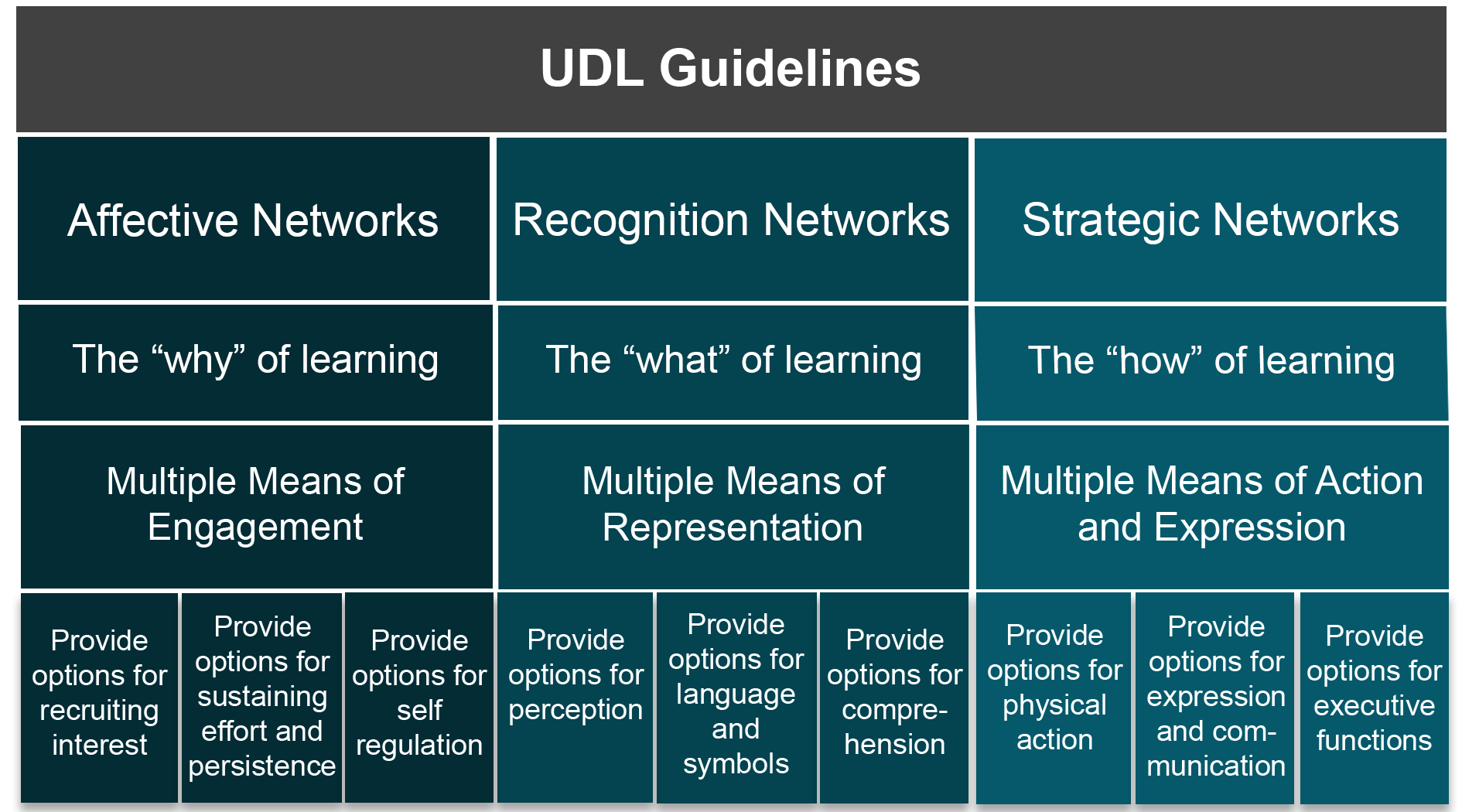6.1: Review of Universal Design for Learning

 / Image Description PDF
/ Image Description PDF
If you did not have an opportunity to complete Module 1 you can get a quick overview of how the UDL Guidelines are structured, and how they apply to post-secondary education by watching Mohawk College’s video, What is UDL? [2:45]:
(Mohawk College, 2019) Video Transcript (PDF)![]()
Every decision we make, as educators, includes unconscious bias. UDL helps us to provide options so we can limit, or avoid, imposing our biases on learners and support their learning journey with increased self-determination.
A primary goal of UDL implementation in post-secondary education in Ontario is to create more equitable, inclusive and accessible learning environments for all students. To learn more about unconscious bias, you are invited to review Module 4.3 Uncovering Unconscious Bias as well as the resources section at the end of this module.
Activity 1: Case Studies
Choose one of the three case studies and examine the following questions:
- What are the barriers for educators and learners?
- Where did each barrier originate (e.g., systemic, student, course design, etc.)?
- What is the impact of each barrier on each stakeholder (e.g., learners, educators, the institution, etc.)?
- How might UDL reduce or eliminate each barrier?
Case Study 1
An international student is hoping to take a classics course. However, as they are reviewing the course description and assessment methods, they notice that the majority of their grade will rely on oral communication like presentations, class discussions and participation, as well as a debate activity. The learner’s written communication skills are very strong, and they have been successful in a variety of other courses, thus far. However, they are less confident regarding their verbal expression as their first language is not English. They are passionate about history, feel they could do very well in the course and are excited to learn, but the format of the course gives them pause.
Case Study 2
An Indigenous student is in her first year of a Teacher Education program. She is living in residence, has made a number of new friends, participates in intramural volleyball, and is progressing well in all of her first-year courses. While she has created community outside of the classroom, she does not feel connected to much of the course content or assigned readings. Her professor appears to be a supportive educator, and they have discussed this issue. However, the faculty member does not feel comfortable or qualified to add Indigenous elements to the curriculum, and the institution has few services to support the professor.
Case Study 3
Every semester, folks in the Financial Assistance Department (FAD) field hundreds of emails and phone calls from frustrated parents and students struggling to navigate post-secondary financial support systems. A group of educators in the FAD are preparing to deliver an introductory session to prospective students on how to apply for financial assistance. They wish to let students know about the options that exist (like the Ontario Student Assistance Program, bursaries, scholarships, etc.), how to apply for each option, what the timelines are and where to go for help if needed. The content is dry, there are many complicated steps, and there is a significant amount of information.
You are invited to record your responses in the way that works best for you, which may include writing, drawing, creating an audio or video file, mind map or any other method that will allow you to reflect and refer back to your thoughts.
Alternatively, a text-based note-taking space is provided below. Any notes you take here remain entirely confidential and visible only to you. Use this space as you wish to keep track of your thoughts, learning, and activity responses. Download a text copy of your notes before moving on to the next page of the module to ensure you don’t lose any of your work!
References
Mohawk College. (2019). UDL with CTL [Video]. https://www.mohawkcollege.ca/employees/centre-for-teaching-learning/universal-design-for-learning
Mohawk College. (2019). Universal Design for Learning [Graphic]. http://www.mohawkcollege.ca/employees/centre-for-teaching-learning/universal-design-for-learning

